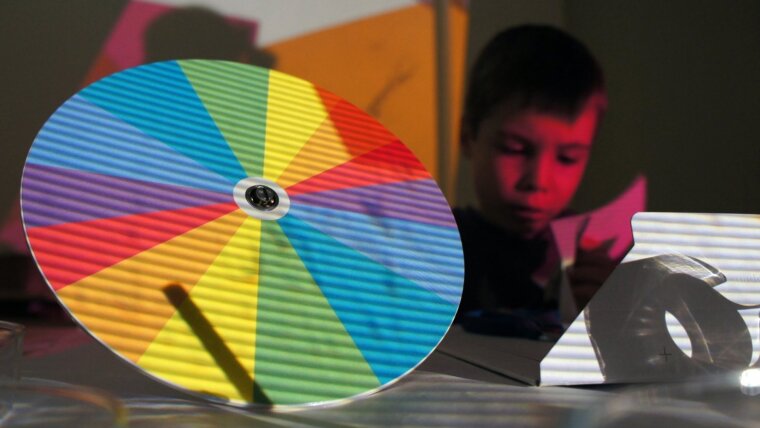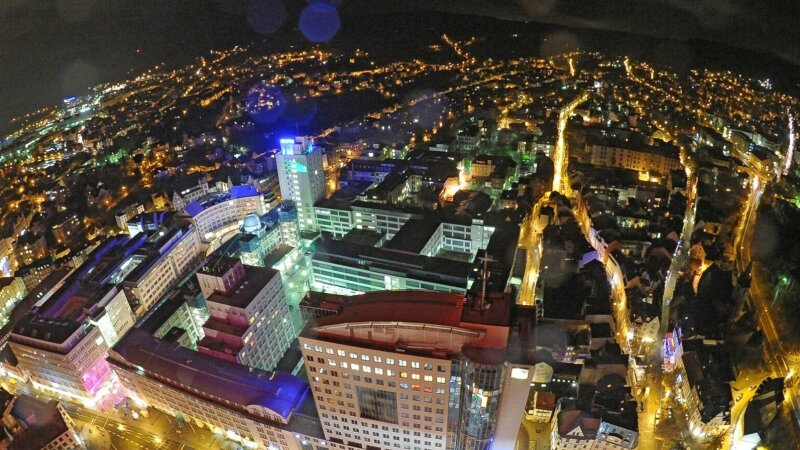
Physics and particularly optics owe their status at the Friedrich Schiller University Jena to three personalities of unique and lasting significance: Otto SchottExternal link, Carl ZeissExternal link and Ernst Abbe. The latter was - and still is - Jena's most notable physicist. Moreover, by establishing the Carl-Zeiss-StiftungExternal link, Ernst Abbesafeguarded the continued existence of the university. He personally took over the direction of the observatory, and it was in his time that the first Institute of Physics was founded. From the late 19th century up to the end of the war in 1945, optics indeed acquired great industrial importance, but after Abbe's fundamental contributions to the theory of optical imaging and the correction of aberrations, optics largely became a subject of industrial research in the secluded laboratories of the Zeiss company. In 1883, Leonhard Sohnke was made the first director of the Institute of Physics.
While Sohnke did some work on optical effects, his research efforts were focused mainly on solid state physics. His investigation into the structure of crystals made him one of the forefathers of present-day solid-state physics in Jena. Throughout the first half of the 20th century, however, the main area of interest was electrical engineering (a very young field in those days), with special emphasis on wireless telecommunications. Max Wien, cousin of Nobel laureate Wilhelm Wien, invented, among other things, the quenched-spark gap, which made possible dependable intercontinental radio links for the first time. Given British control of the submarine cables and the interception practice common even then, this was of vital strategic importance for the ambitions of the German empire.
After World War I, the pioneering achievements of the Jena physicists were followed by advancements in the field of short waves. In 1924, Erich Habann invented the magnetron, and Abraham Esau accomplished the first VHF radio communication between Kahla and Jena in 1925. Esau was the supervisor of the doctoral theses of Lothar Rohde and Hermann Schwarz. It may be mentioned in passing that at the same time, Hans Busch discovered electron optics, but the experts in Jena failed to realize its importance.
Nevertheless, Jena's outstanding competence in high-frequency engineering paved the way to laser technology and, thus, the rise of optics and photonics to one of the most important fields of research at the Friedrich Schiller University Jena. This competence also gave rise to a flowering of NMR spectroscopy in all of those developments a number of notable theoreticians who taught and did research in Jena were of great importance. Examples are Felix Auerbach, Georg Joos and Friedrich Hund. Erwin Schrödinger, too, dwelt at Jena for some time. These, arguably, are the roots of the Faculty's continuously leading position in the theory of relativity. The NMR department survived at the faculty until after the political upheaval.
The development of laser physics was decisively stimulated by Wilhelm Schütz and Paul Görlich. For this purpose, research was organized strategically and coordinated with the interests of the Zeiss company. The first lasers became functional in the late summer of 1962. A few months later, on December 3, 1962, they were presented to an amazed public during the Physical Colloquium. Later, under the direction of Max Schubert and Bernd Wilhelmi, Jena became a centre of ultrashort-pulse laser physics. After the reunification of Germany, the Faculty of Physics and Astronomy, which had been dissolved in 1968, was re-established. Although one of the smallest, the Faculty has since grown into a key performer of the Friedrich Schiller University. With the foundation of the Abbe School of Photonics in 2008 and its Master's degree course in Photonics, the Faculty has adopted a role as trailblazer in the University's efforts towards a higher degree of internationalization.
Nocturnal Jena from bird's eye view.
Image: Jan-Peter Kasper (University of Jena)